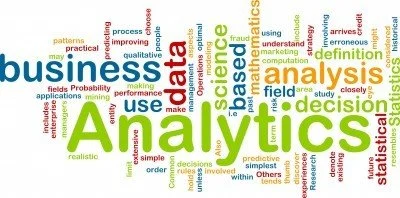
Use of Cloud and Analytics in HR
Introduction
With HR departments now awash in heaps of data, it may seem that data is a pitfall. But today we also have cloud computing and HR analytics, which are reshaping how HR teams function, enhancing immediate efficiency, providing data access for future efficiency, and creating future-oriented strategic decision-making.
Why Move to Cloud-Based HR Solutions?
Shifting to a cloud-based HR system is no longer a trend, it’s a requirement for firms that want to be considered future-ready. Here are some great reasons for why you should consider taking your HR technology into the cloud
Data Access Anytime, Anywhere: Cloud-based HR tools provide anytime, anywhere access to employee records, reports, and insights on any device and from anywhere; this is highly beneficial for hybrid or remote team environments.
Mobile Dashboards: HR leaders and managers are able to create mobile-first experiences, so that they can manage KPIs and workforce metrics as they go.
Effortless Collaboration: Cloud platforms allow for seamless collaboration and connection with stakeholders, partners, or vendors—allowing for easier operations as well as a more frequent flow of real-time information and updates.
IT Independence: There is no longer complaining about relying on internal IT resources; cloud-based HR solutions require very little set up or maintenance, so even employees can take up the responsibility for them.
Quick Deployment & Scalability: You can deploy tools quickly and scale as your team or business expands, without getting burdened by facility related issues.
How HR Analytics Drives Smarter Decision-Making
HR Analytics turns HR data into insights. It helps the organization to then use those insights to drive actions and decisions in a strategic direction that aligns workforce planning initiatives with business objectives. Here is how HR helps with analytics:
Maximize Workforce: Analyze information about employee performance, engagement and attendance and help managers make better decisions about resource allocation and work optimization to prevent inefficiency.
Align HR Strategies with Corporate Strategy HR metrics such as turnover rates, recruitment cycles, and vocational training effectiveness, can be connected with bigger company KPI's and their impact measured.
Identify Top Talent Predictive analytics can help sift through large numbers of application/ submissions, enable HR to find high-performers that they can take a risk on when filling a vacancy.
Minimize Employee Turnover Identifying trends to employee turnover and the mitigating factor and taking proactive steps to address them before they develop.
Improve Employee Development Assembling the information needed to make the identification gaps in skills and abilities of people and employees, can help managers offer customized training programs to a per(limited) budget, and report learning.
What to Look for in a Cloud HR Analytics Solution
If you are opting for a customized solution these are the features you need to look for:
Network access through multiple platforms: Once your HR data is on the cloud, your users will be able to access the same from anywhere at any time. They would be able to access it from multiple devices, such as smart phones, tablets and laptops various platforms, such as androids, iOS and Windows.
Flexibility: The cloud analytics solution you go for should be flexible enough to suit your needs. Anytime you want to add or remove a user or add a few software features or resources, you should be able to do it easily and quickly.
Resource pooling facilities: The cloud analytics solution you use should allow entering and using of data simultaneously as many users will be accessing data at the same time. Such a feature will be very useful for people who travel too much or work out of office.
Measured service: Although cloud computing is cost-effective, the solution you choose should require you to pay only for the services that you end up consuming. The number of users, the storage levels, the bandwidth and the processing, everything should be considered during the process of billing.
Final Thoughts
Marketing teams have long used analytics to drive success. Now, it's time for HR professionals to leverage cloud and data analytics to make smarter, faster, and more impactful decisions.
By adopting cloud-based HR solutions and analytics tools, HR teams can streamline operations, reduce costs, enhance employee experiences, and ultimately contribute more strategically to business growth.




